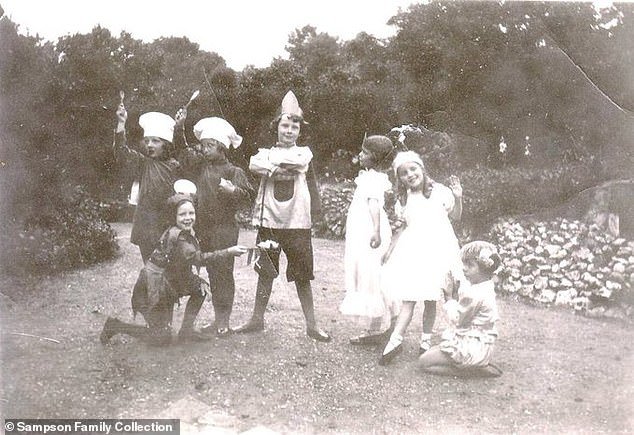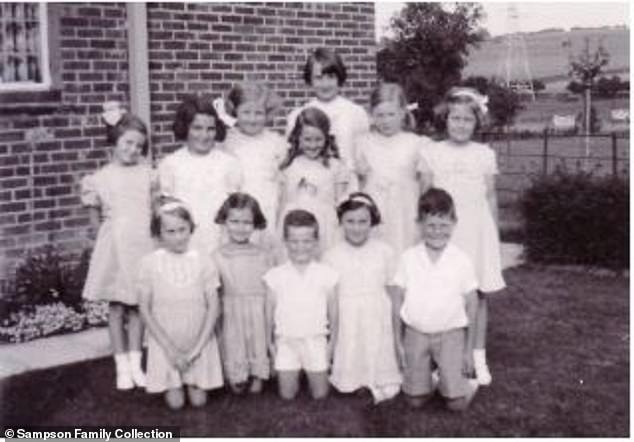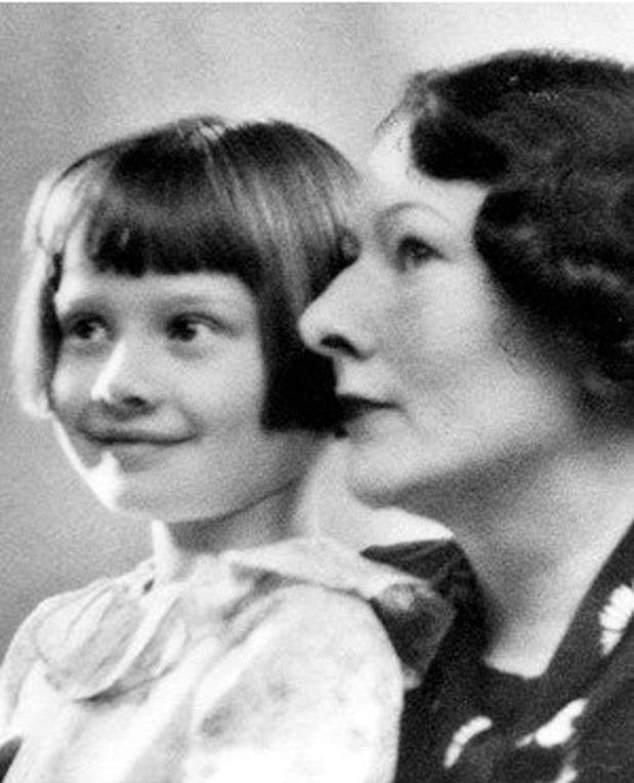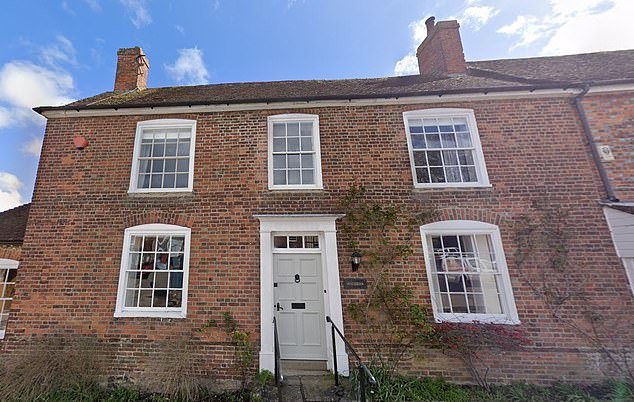As the star of classics such as Breakfast at Tiffany’s, Sabrina and Wait Until Dark, she was one of Hollywood’s biggest film icons.
But as a little girl with no claim to fame, Audrey Hepburn was just a small part of a large household.
Researchers have unearthed the first ever written account of her time as a student at a private school in Kent between 1937 and 1939.
The document, from the 1939 Register – which was a record of almost everyone living in Britain – shows the then 10-year-old in the Butcher family household in Elham, Kent.
She is listed under the double-barreled surname Hepburn-Ruston, which her father adopted in the mistaken belief that he was descended from James Hepburn, the third husband of Mary, Queen of Scots.
After World War II began, her Dutch mother fatefully chose to return her to Arnhem, Netherlands, just before Nazi Germany invaded the country.
Hepburn and her family had to resort to eating food made from tulip bulbs to survive the ensuing famine, which killed as many as 20,000 people.
As the star of classics such as Breakfast at Tiffany’s, Sabrina and Wait Until Dark, she was one of Hollywood’s biggest film icons. But as a little girl with no claim to fame, Audrey Hepburn was just a small part of a large household. Above: Hepburn in Breakfast At Tiffany’s


Researchers have unearthed the first ever written account of her time as a student at a private school in Kent between 1937 and 1939. The document, taken from the 1939 Register – which was a record of almost everyone living in Britain – shows the then 10-year-old in the Butcher family household in Elham, Kent
A 2019 book claimed that when she was older, Hepburn worked for the Dutch resistance and that her family harbored a British soldier in their basement.
The research that uncovered Hepburn’s 1939 record was carried out by statistician Georgina Sturge of the House of Commons Library and family historian Dave Annal, in collaboration with the ancestry website FindMyPast.
Normally, a certificate from the Register from 1939 is only opened if the deceased would have turned 100, or if FindMyPast sees a death certificate of a younger person.
But the ancestry website agreed to make an exception for Hepburn’s record.
Hepburn was born in Brussels, Belgium in May 1929.
Her parents – the Englishman Joseph Ruston and the Dutch Baroness Ella Van Heemstra – were both fascist sympathizers.
When her mother sent her to England in 1937, her parents’ marriage had failed.
Until the new discovery, historians knew Hepburn lived with a family called Butcher, but searches had turned up no mention of her.
Mr Annal eventually discovered an entry mentioning Edward and Evelyn Butcher, their son George and domestic servants at Orchard Villa, in the village of Elham.


Hepburn (above centre) is seen dressed up with other children during her stay in Elham, Kent


Hepburn (back row centre) at a friend’s eighth birthday party in Ottinge, near Elham


The research that uncovered Hepburn’s 1939 record was carried out by statistician Georgina Sturge of the House of Commons Library and family historian Dave Annal, in collaboration with the ancestry website FindMyPast.
However, the names of two of the building’s other residents have been redacted.
Incredibly, when FindMyPast agreed to open the record, it turned out that Hepburn was one of the other residents.
In Elham Hepburn attended two small private schools. One was run by a pair of sisters whose last name was Rigden.
The house on The Square in Elham now bears their name.
According to Elham History Society, Hepburn was remembered as a “beautiful child, smiling, polite, affectionate, eager to please.”
In one photo, she is seen dressed up and having fun with other children. In another image, she towers over other children at a friend’s eighth birthday party.


Hepburn was the daughter of the Dutch Baroness Ella Van Heemstra. Above: The mother and daughter in 1935
She took dance lessons and received elocution lessons from the sisters who taught her.
And while in Elham she took part in her very first public performance, in the local Brownies version of Humpty Dumpty.
After Britain declared war on Hitler’s Germany in September 1939, her mother ordered her to return to Arnhem.
After the Nazi invasion in May 1940, Hepburn became known as ‘Edda’ to hide her English heritage from the German occupiers.
While in the Netherlands, she studied ballet at the Arnhem Conservatory, but also faced the trials of war.


In Elham Hepburn attended two small private schools. One was run by a pair of sisters whose last name was Rigden. The house on The Square in Elham now bears their name
After the Dutch Famine broke out in 1944, Hepburn’s family turned tulip bulbs into flour to make enough food to survive.
But the actress still suffered from malnutrition and became seriously ill after the war.
Her acting career began on the West End stage in London, before landing her first major film role in the 1952 production Secret People.
Hepburn went on to win an Academy Award for her performance in Roman Holiday in 1953 and was nominated a further four times.
The star died in 1993 at the age of 63 from appendiceal cancer.
